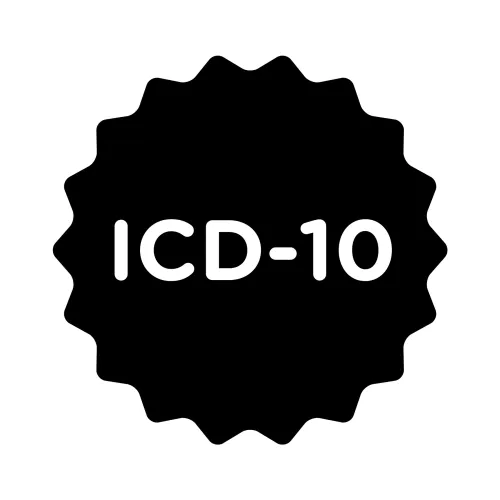Bust These 5 E/M Myths Before You Make Costly Mistakes
Do you know what counts as established? Find out. Coding advice can come from all sorts of places - conferences, colleagues, auditors - and often they can conflict with one another. So what should you do? How can you distinguish legitimate E/M advice from the fables and fairytales? Do this: Go straight to CMS, either directly or to your Medicare Administrative Contractor (MAC). One Part B MAC, Novitas Solutions, recently made its E/M guidance public during a teleconference, "New Patient Guidelines and Coding." Read on to discover five realities that will make you think again about some commonly-held E/M myths you may have believed. Myth 1: Surgical Visits Don't Count Toward "New Patient" Rules As most practices are aware, CPT® clearly defines what qualifies as an established patient: "An established patient is one who has received professional services from the physician/qualified healthcare professional or another physician/qualified healthcare professional of the exact same specialty and subspecialty who belongs to the same group practice, within the past three years." Many practices take this to mean if a patient has never had an E/M visit at the practice before, then he is automatically considered a new patient. However, some types of face-to-face services fall outside of just the E/M. In fact, if an oncology surgeon operates on a patient in the hospital and then sees her a year later at his practice, that patient would be considered established, even if they never spoke or had an E/M encounter before the office visit. "Surgical procedures require a face-to-face encounter between the physician and the patient," said Novitas' Serena Hempkins during the webinar. "A patient is not considered new if a surgical procedure is performed and billed within the preceding three years by the same physician or a physician from the same specialty in that same group practice." This means if a screening colonoscopy was performed in a "direct access" program (no prior E/M evaluation), and then the patient is seen two and a half years later about a complex problem, the patient is still "established" for purposes of the E/M code category selection. The exception would be if a payer recognizes consultation codes and if the circumstances qualify for use of consultation codes. Know where NPPs stand: Visits with non-physician practitioners (NPPs) count toward the three-year rule, Hempkins added. "NPPs assume the specialty of their group practice, and a new patient visit by an NPP counts as a new patient visit for all practitioners of that group practice," she advised. The same consideration pertains for a locum tenens coverage, or on-call coverage. Myth 2: Switching Practices Restarts the 3-Year Rule Suppose a physician joins a new group practice and brings along some patients from her previous practice whom she has seen within the last three years. Although the new group practice has never seen these patients before, the patients are still considered established, said Novitas' Tasha Bishop. "Remember, once established to one physician, then established to all physicians in the same group with the same specialty," she advised. "The physician brings the status of the patient with them to the new practice." Keep in mind not all payers would agree with this opinion, at least in the case where new records need to be set up and particularly if old records are not available. The reverse is also true. If the patient has been seen in the practice within three years and sees a provider new to the practice, it is still an established patient. Myth 3: The Documentation Volume Leads to a High-Level Code Physicians sometimes produce a high level of documentation, leading the doctors to automatically select a level-five E/M code. But E/M code level selection doesn't work this way. In fact, a short concise note meeting all the elements and medical necessity canqualify for a higher level than an incredibly voluminous note. Medical necessity is "the overarching criteria for payment in addition to the individual requirements of CPT®," said Hempkins. "The volume of documentation should not be the primary influence on the level of service billed," she said. Next time your surgeon hands you a thick chart with a high service level circled, but you don't see documentation to support that code, sit down with him and go over the elements in the record that lead to the E/M level supported. The nature of the presenting problem and complexity of medical decision-making are key aspects of a note an auditor will review. Once the physician sees the specific requirements for reporting the high-level E/M codes, he may be able to accurately select the right code the next time. Myth 4: You Can't Count One Element Toward Both HPI and ROS Although the myth has persisted for years, most payers don't agree that practices are barred from using one documented statement toward both the review of systems (ROS) and the history of present illness (HPI). "It's not considered double-dipping to use the systems addressed in the HPI for credit in the ROS, because review of systems inquiries are questions concerning the systems directly related to the problem identified in the HPI," Hempkins said. "So, you can receive credit in two places with a single statement." For example, if a patient presents with abdominal pain, you can credit that toward "location" in the HPI and toward "gastrointestinal" in the review of systems as long as a review of the system is noted and considered. Myth 5: Documenting "Abnormal" By Itself Is Sufficient in the Exam When documenting the exam portion of the E/M service the physician can write a particular system is "normal" when warranted. But just stating that a system is "abnormal" is not enough. "If the documentation says 'abnormal,' there must be further documentation as to why the exam is abnormal," Hempkins said.




